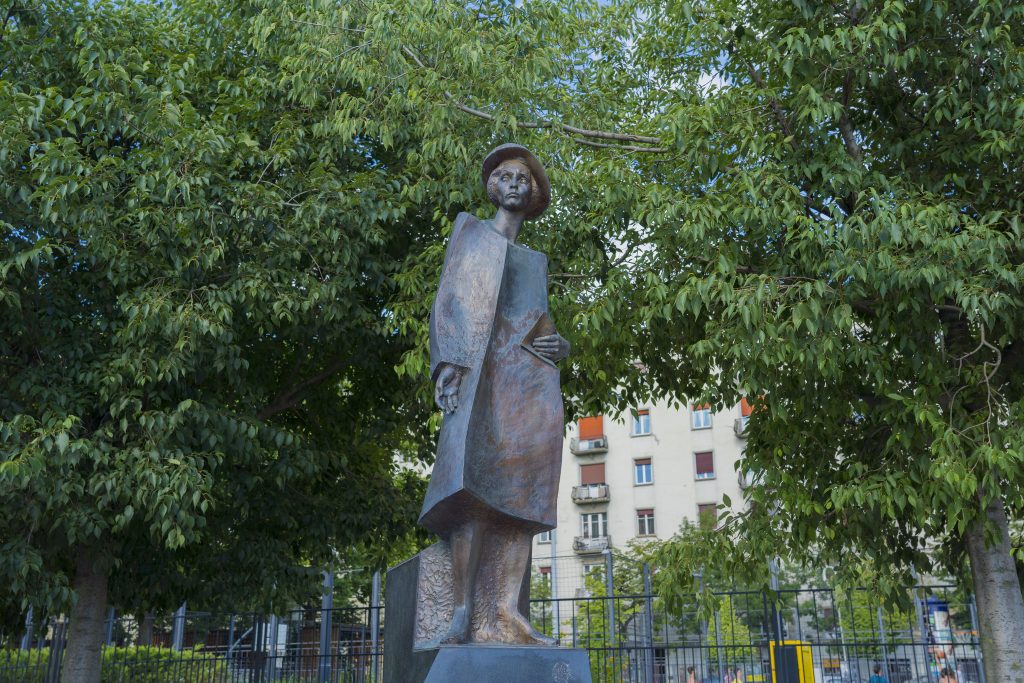The https://english.atlatszo.hu use cookies to track and profile customers such as action tags and pixel tracking on our website to assist our marketing. On our website we use technical, analytical, marketing and preference cookies. These are necessary for our site to work properly and to give us inforamation about how our site is used. See Cookies Policy
Data visualization of the Hungarian bronze ceiling: there are more statues of animals than historic women in Budapest
We have all heard about the glass ceiling, the expression referring to the fact that it is extremely hard for women to reach the highest governmental or top business management positions. The bronze ceiling refers to the fact that globally very few female politicians, artists and scientists have statues commemorating them in public places.
In many Western countries, there are campaigns for more statues to be erected to historic women. There is no such campaign in Hungary at the moment and Atlatszo decided to take a look at whether women have broken the bronze ceiling in our country.
The website of Budapest Galéria (Budapest Gallery) lists all the statues that are owned and maintained by the municipality of Budapest. It does not include statues inside buildings, tombs or private memorials. However, the vast majority of statues belong to the city, so this list gives us a good picture of the percentage of female statues.
We gathered the data from the Budapest Galéria website and created a correlating spreadsheet indicating whether the gender of the statue.
There are 1173 statues in the streets of Budapest maintained by the municipality. According to our research, 785 statues depict male figures, 150 depict female figures. There are 133 abstract, non-figurative statues, 45 animals and 45 mixed-gender groups of people. There are 44 statues with a religious theme and 18 groups of men.
The numbers look worse when we look at how many men and women are historic figures. 618 statues depicting men are historic figures. This means that they are kings, statesmen, politicians, artists or scientist.
Out of the 150 women only 35 are historic women. That is, only 35 of them have names. (We treated statues of Jesus and Virgin Mary as artifacts with a religious theme as these statues have a completely different history and purpose.)
The rest of the statues are decorative women without a name: the majority of them are nudes depicting women sunbathing, crouching, sitting, dancing, playing musical instruments, chatting and even one depiction of a woman donating blood.
From our database it became clear that most of these female statues depicting everyday moments were erected during the socialist era of Hungary.
Besides the statues mentioned above, there are 35 historic women who are commemorated by statues or plaques. Among the most recent statues, erected since the regime change, we find statues of actresses such as Déryné or Zita Szeleczky, politician Anna Kéthly, sociologist Ottília Solt and writer Margit Kaffka.
Atlatszo asked Budapest Galéria if there are any plans for new female statues and we were told that there were none planned at the moment.
The statues of animals include bears, eagles, doves and several others. When counting the statues of animals we only included stand-alone statues of animals. That is, we did not include horses of horse-mounted kings or commanders or animals that are just a side decoration to a huge group of statues.
This means that there are more statues to animals than to historic women in the streets of the Hungarian capital.
Written by Anita Kőműves
Data visualization by Attila Bátorfy
Editing by Clare Humphreys
You can read the original, Hungarian language story here.
The photo shows the statue of social democratic politician Anna Kéthly (1889-1976) in Budapest. Photo: Szebáld Szakál / Atlatszo

